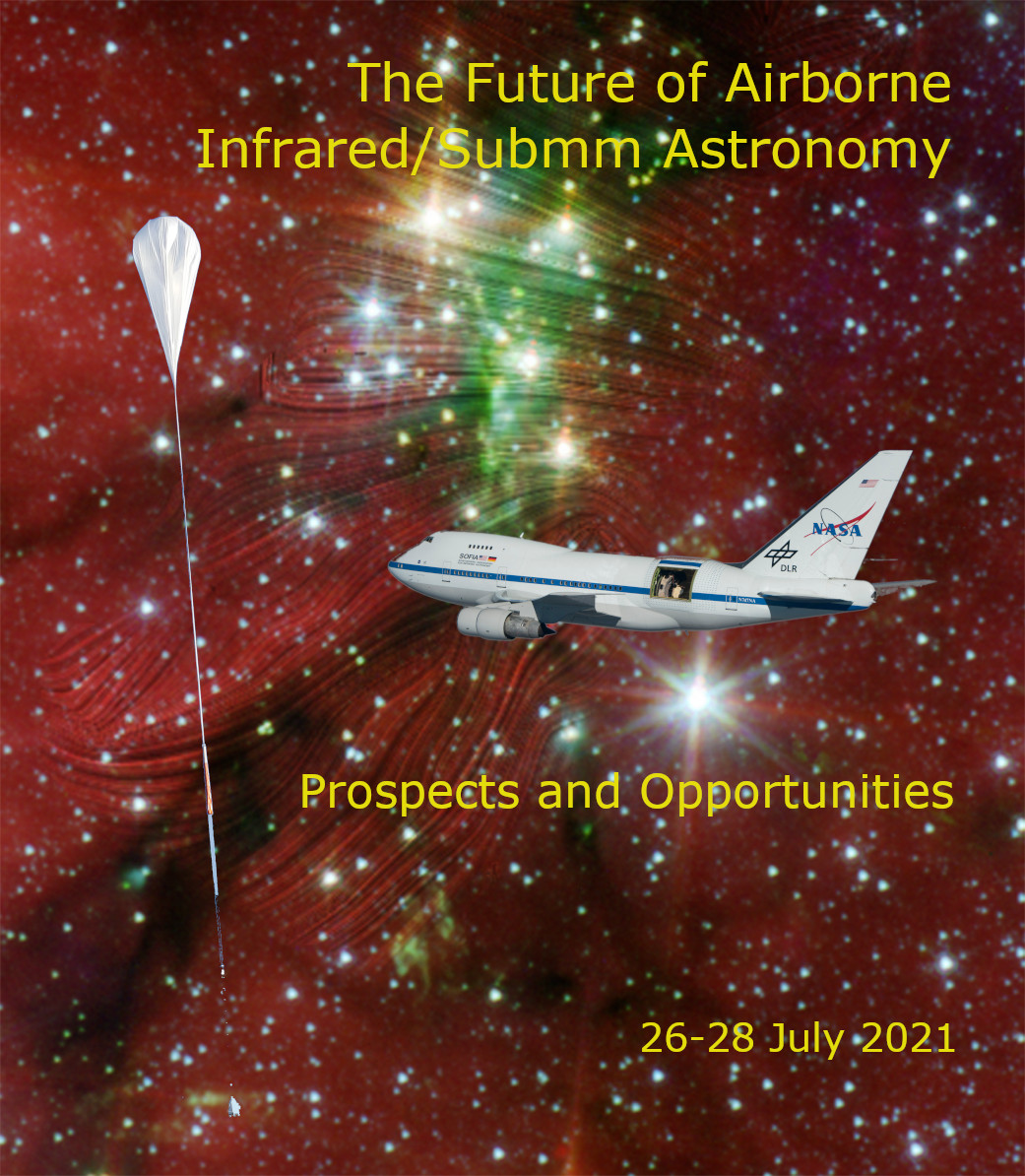
This online workshop aims to define the major science topics in Infrared/Submm astronomy for the next decade from a European perspective. Solar system to distant galaxies, continuum and spectroscopy observations from airborne platforms will be discussed.
About half of the energy that was emitted by stars during the lifetime of the Universe has been absorbed and re-emitted by dust and gas at Infrared to Submm wavelengths. Most of this spectral range cannot be observed from the ground due to absorption in the Earth's atmosphere. Yet, this spectral range contains essential information about a wide range of exciting astrophysical questions, ranging from the role of dust in the early stages of Galaxy formation, the energy budget of the ISM, to the formation of stars and planets. Complementary to the performance of space observatories at these wavelengths, there are a number of advantages offered by airborne platforms in terms of cost, versatility, and novelty of the technology being utilized.
This online workshop, planned for 26-28 of July, 2021, is the first of two with the Infrared- and Submm-community in mind. This first one aims to gauge observational and theoretical interests for the next ten years, while no Infrared/Submm space observatories are planned, but SOFIA is in regular operation and balloon-borne experiments/missions executed flights already or are in development. Key science goals from this first workshop will then feed into a second one, which is planned in October 2021, where instrument builders are invited to present their ideas of new, innovative instrument solutions to address the science questions identified.
An important motivation for this effort is the recent publication of the SOFIA instrument roadmap by NASA, that covers the next 10 years. The first parts are already being implemented at this time and thus provide a future vision. With the help of the scientific community, we seek to formulate a European perspective on Infrared and Submm instrumentation, that is inclusive of all airborne platforms. Such a plan will be a clear reference for proposals to funding agencies, provide new opportunities to observers and instrumentalists, and thus will continue to energize the field.
A summary of the key science goals from the first workshop and the instrumentation solutions from the second workshop will be presented in a white paper about three months later.
Registration is free and starts on 11 May 2021
Registration deadline is 20 July 2021.
Abstract submissions are invited. Deadline is 11 June 2021.
The final schedule will be published on 25 June 2021.
Workshop proceedings will be available in advance of the second workshop in October.
A summary of this workshop provides important input to the second workshop planned for 17-19 Nov 2021 and is now available.
Image Credits:
Serpens South star cluster © SOFIA/NASA
SOFIA Image © NASA/Jim Ross
